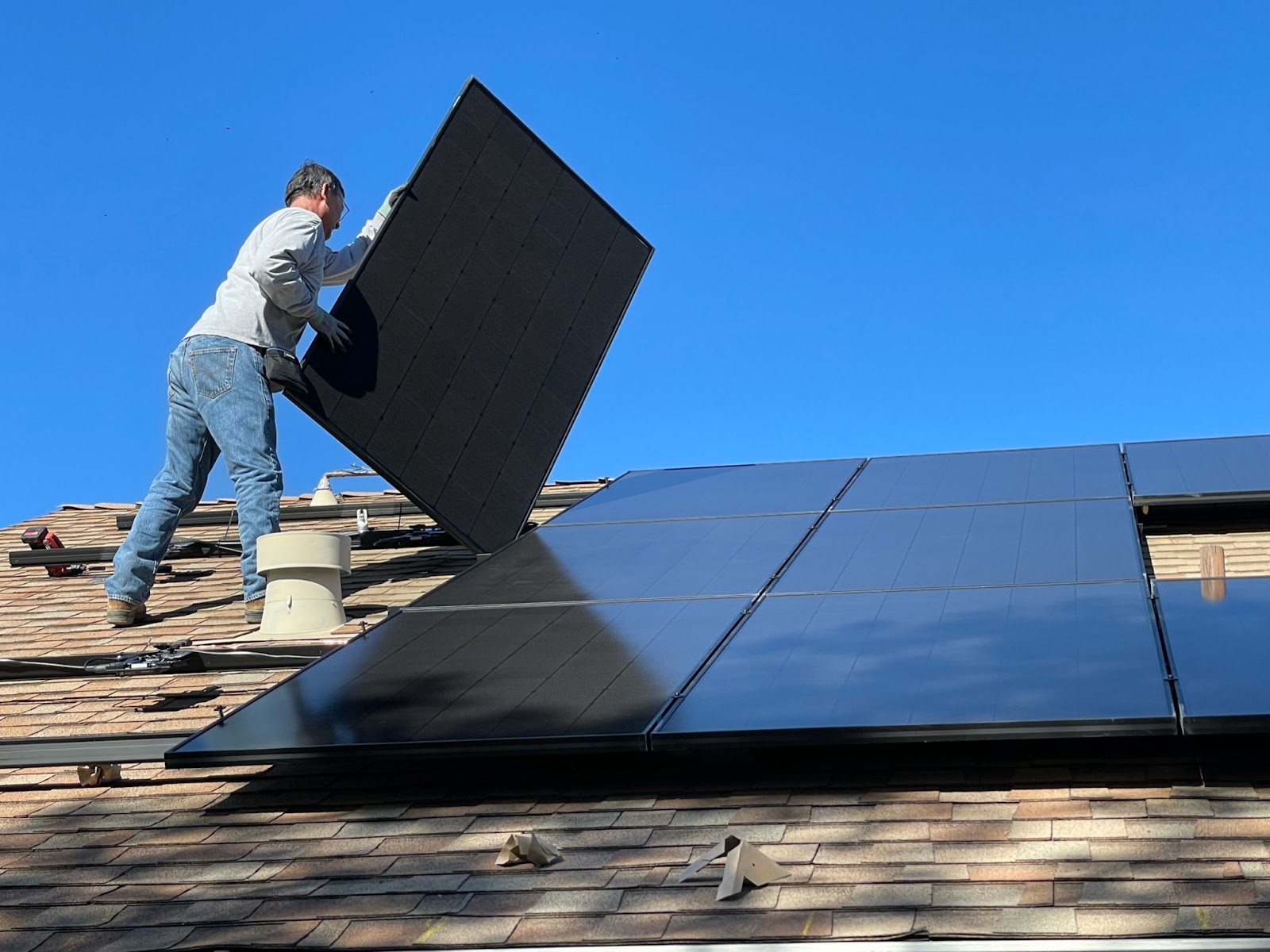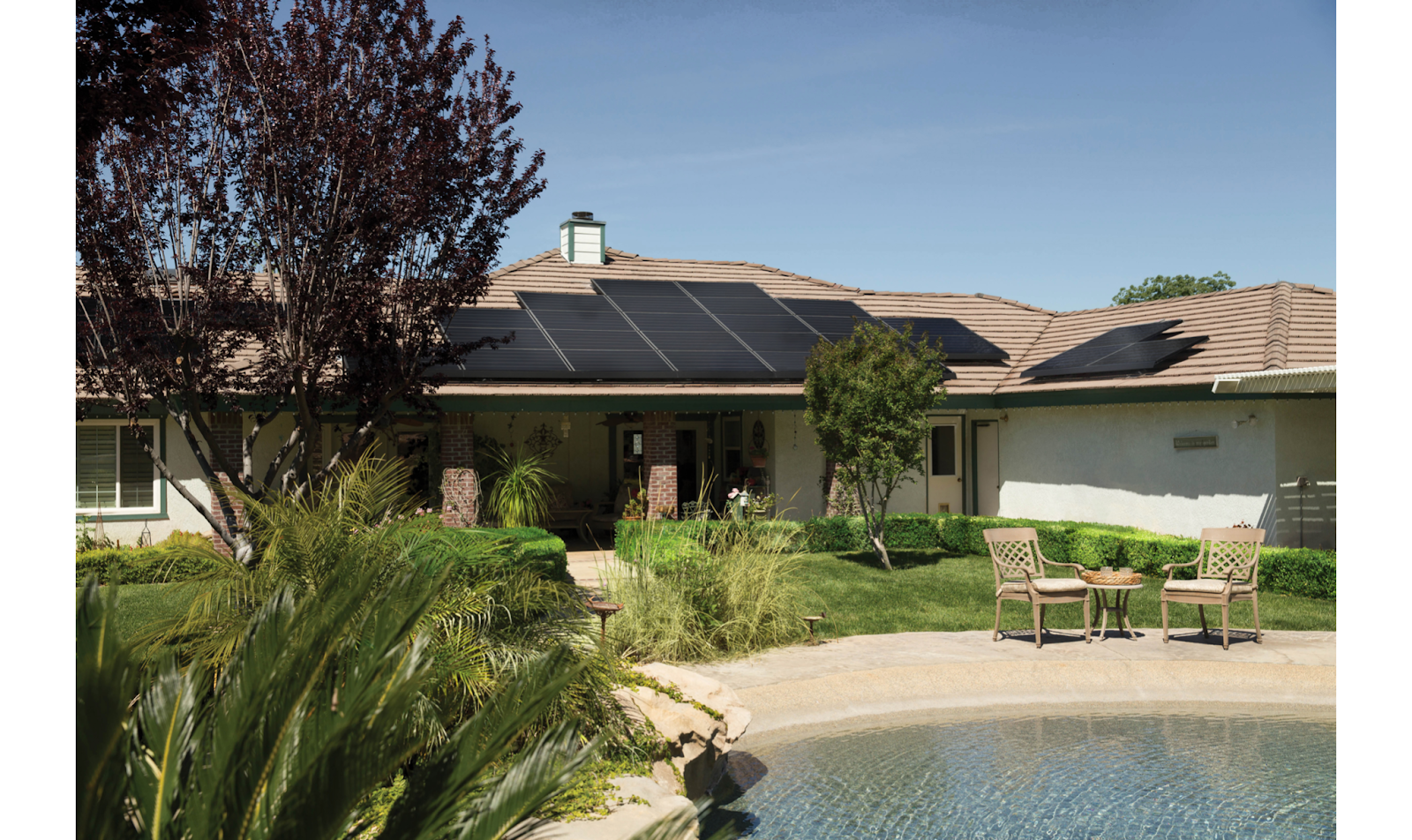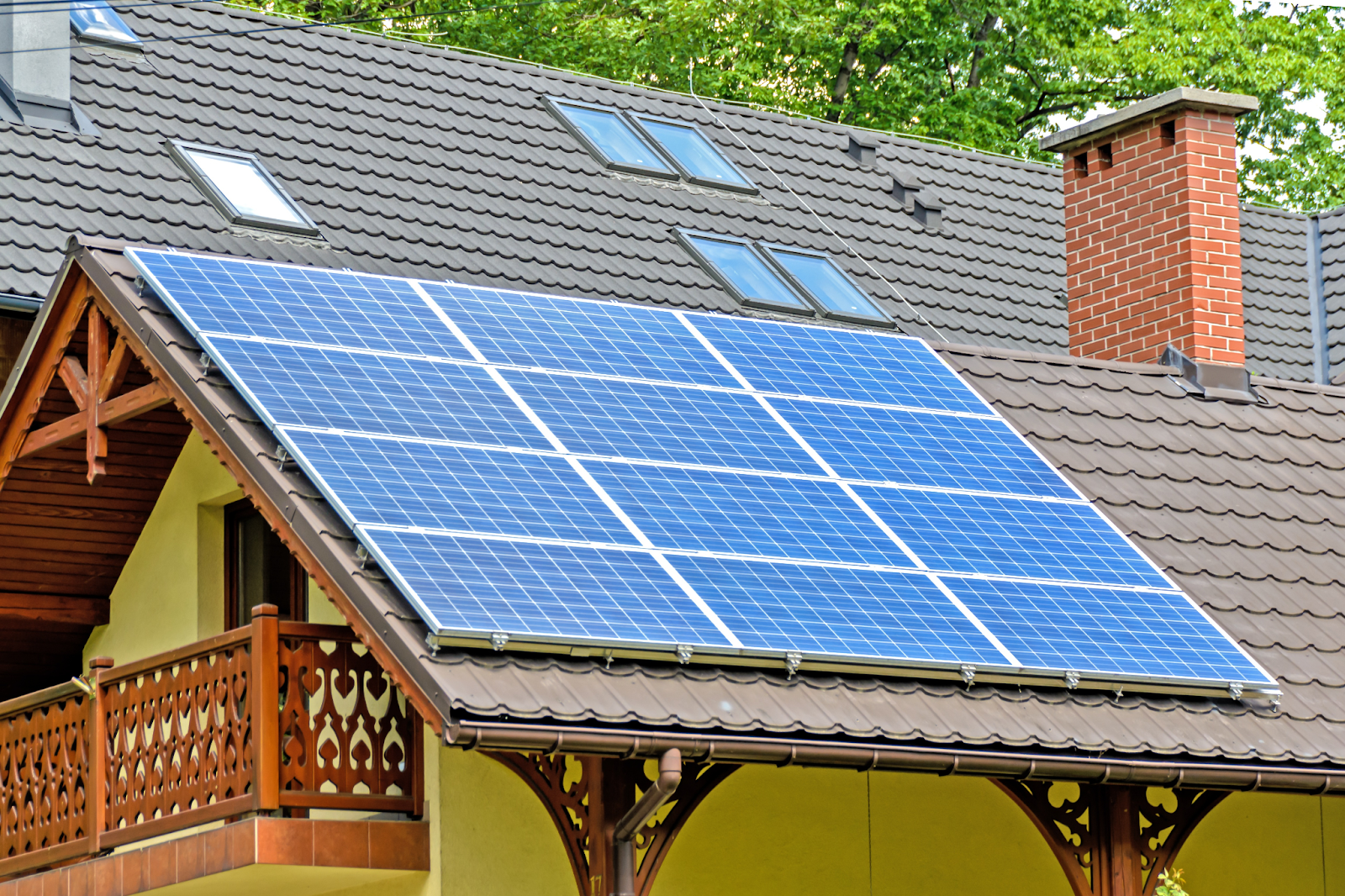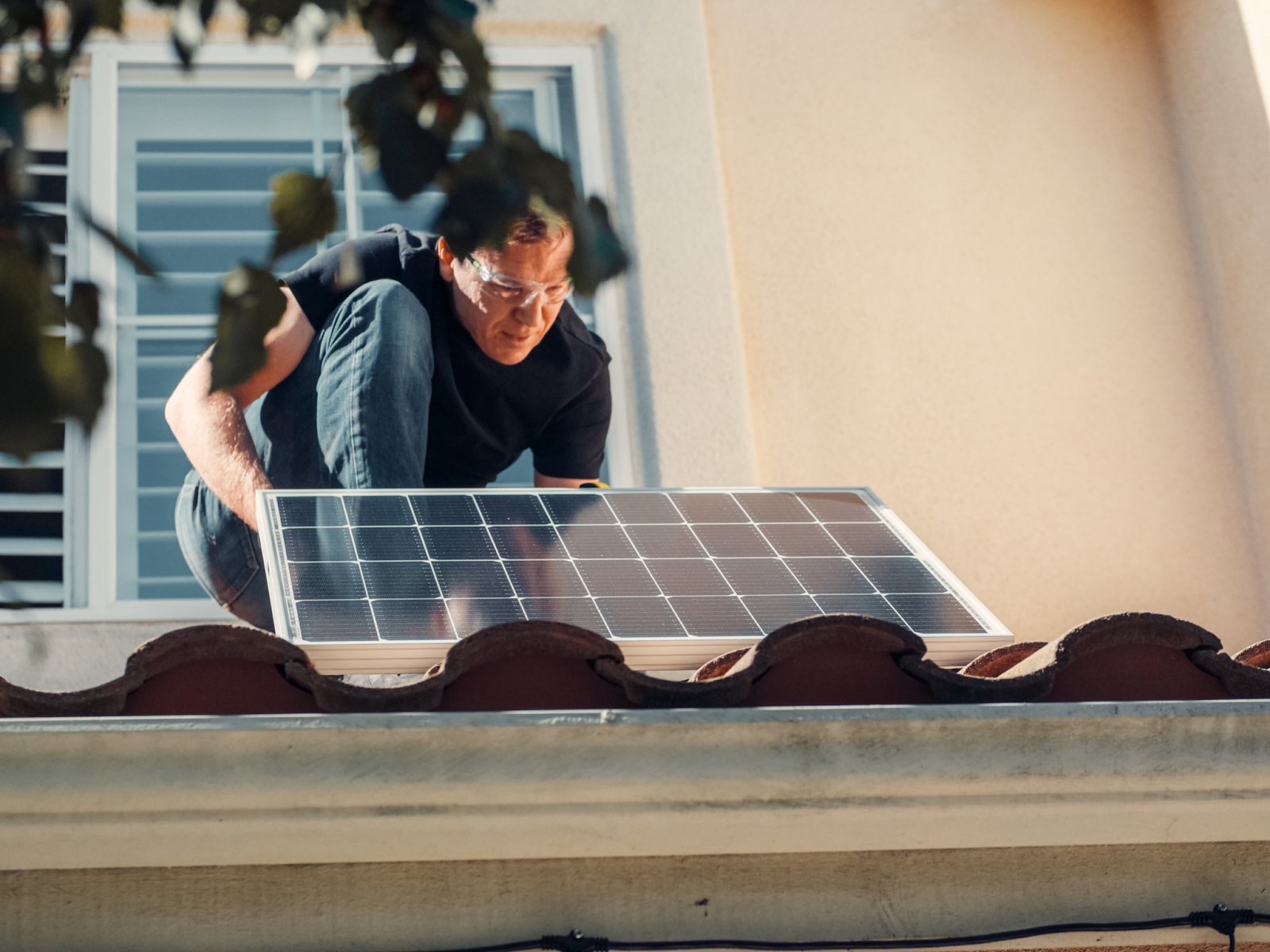So you’re thinking of ‘going green.’ Solar roofing is a great way to make your home and your life more sustainable and efficient, but it’s also a big change for your home. So what makes solar roofing worth it? Let’s find out.
Is Your Home a Good Fit for Solar Roofing?
Before you start drawing up plans and writing checks, it is very important to determine if your home is a good fit for solar roofing. Solar roofing will give you the most bang for your buck on a south-facing, sloped roof, but this doesn’t mean it won’t work on other homes. If the yard around your home is full of trees– solar roofing may not be the best choice for you. If branches can be trimmed away to allow more sunlight then you may make good use of solar panels with a little extra maintenance, but too dense foliage could render your solar panels useless. Lastly, you should take a look at the condition of your current roof. How old is your roofing? Is there any decay or damage? It’s best to install solar panels onto young, strong roofs to ensure stability and maximum lifespan of your roof and solar panels too.
Solar Panels vs Solar Photovoltaic Tiles
Solar Panels
When you think of solar roofing, you likely are picturing the classic, large, dark black/blue panels which rest atop your pre-existing roofing. Solar panels have been used on residential homes since the early 2000s, and are the dependable, more commonly known type of solar roof technology among contractors and customers alike. Solar panels are versatile; they can be installed on most roof types, whereas other solar roofing options require more specific roof types.
Something to note about solar panels is that you do not need to cover your full roof with paneling to save on your energy bill. You can use this simple formula to calculate how many square feet of panels you need to produce the amount of solar power you want.
Photovoltaic Solar Tiles
From afar, they appear to be regular roof shingles, but at a closer glance, they are so much more. Photovoltaic shingles are essentially mini, shingle-shaped solar panels that appear more like the traditional asphalt shingles or slate tiles. They are a more subtle style of rooftop solar energy for those who prefer a more classic look than the more modern-looking solar panels. Photovoltaic tiles can be less effective than solar panels. Since they are incorporated into the roofing of the home, there is no potential to tilt/rotate the tiles (as you might do with panels
With both styles of solar roofing, there is so much to consider. The size of your home and the amount of energy you use will factor into how much square footage of solar roofing you might invest in. There are also several options for efficiency and power output as well. Depending on the climate and location of your home relative to the equator (aka hottest, sunniest part of the world) you may want to consider a solar roof with stronger power output.
Solar Panel Cost
Over the past 10 years, solar panels have gone from high-end clean technology to a sensible home upgrade, with more than a 70 percent drop in installation cost during that time. For the average 2,000 square foot home, solar roofing and installation will cost around $16,000 and $18,000. Though solar roofing may be a heftier cost up-front, good care and correct installation will provide a better return on investment in the long run. For people considering solar panels, it can be helpful to look into leasing opportunities. You may also gain peace of mind reading up on the warranty that comes with certain solar roofing manufacturers.
Another way to save on your solar roofing investment is through your state’s renewable and efficient energy incentives and tax breaks. You can read more here about what opportunities may be available for you in your home state.
The Solar Panel Installation Process
Whether you go with solar panels or solar shingles, the installation process of your solar roofing can vary. Solar shingle installation, since each photovoltaic tile is the size and shape of an asphalt shingle, can be much more labor- and time-intensive. Solar panels are a much simpler matter because they are placed on a system of racks on top of your existing roofing. Whether you go the route of solar shingles or panels, the installation process can take around three days. Keep in mind though that factors such as roof size, type, and the number of panels all affect installation time.
What will take the longest amount of time in the solar roofing process, though, is the inspection, permitting, and interconnection processes, which can take up to three months.
4 Solar Panel FAQs
1. How do Solar Panels Work?
During the day, the solar cells in the panels absorb energy from sunlight. Circuits within the cells turn that energy from the sun into direct energy. Once converted to direct energy, a device on the solar panel system converts the energy into a usable alternating current– this is the energy that comes out of your wall outlets!
2. What if they’re damaged?
Solar panels and solar shingles both have no moving parts, so there is little room for anything to go wrong. Rain and snow will act as a natural cleaning solution for the panels. Since a solar panel or shingles’ job is to absorb sunlight, its surface will always be warm enough to melt any snow. It is wise, though, to have an annual inspection done on your solar roofing– just in case.
In case something does go wrong, maybe a tree falls and cracks the surface of your solar panel, you can have peace of mind knowing that most panels come with a warranty of 20-25 years.
3. Can I remove them if / when I want to?Removing solar panels or shingling from your roof is generally more costly and more effort than it’s worth. If you leased the solar paneling, breaking the lease agreement could mean more costs than just the removal fee (which would likely be around $300-$500).
4. What roofing materials + style best support solar?
Most of the average roofing styles can support solar roofing. There are ways to install solar panel mounts on clay tile, asphalt, and metal roofs alike. Even if your roof is steep, your solar panel will still work just fine. Unless, however, it is at or greater than a 40-degree angle (which is unusually steep) then your roof will likely not be a good fit for solar panels.
As time passes, renewable energy is becoming more and more accessible for the average homeowner. It’s a very exciting time that homes can now more easily than ever become energy efficient. For any questions you may have about solar roofing and preparing your existing roof for solar panels, you can call us at CoMitted 365.






